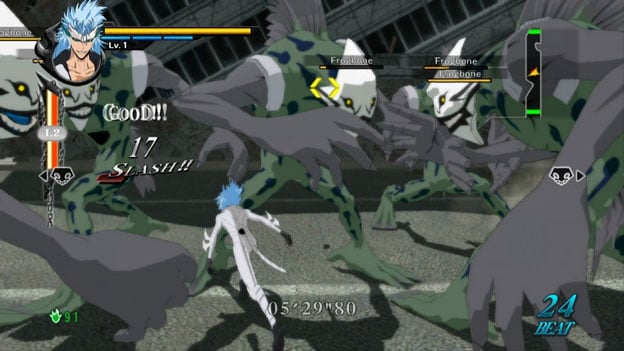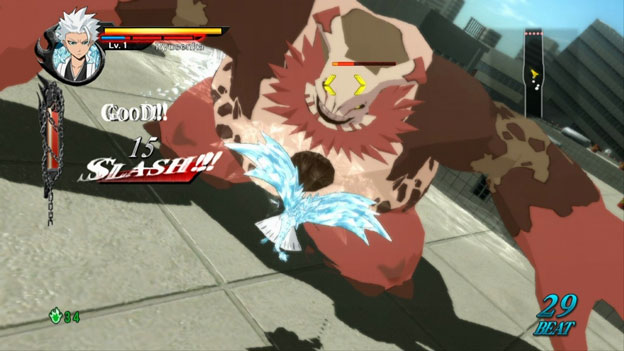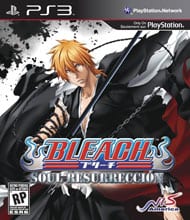Bleach Comes to the PlayStation 3
A lot of people compare the Bleach and Naruto anime series. For example, both feature a young hero who seems to always have the fate of the world on his shoulders. Though comparisons of this sort are fair, if you want to compare their corresponding video game series, Bleach and Naruto couldn’t be more different. While Naruto has appeared on every major home and handheld console several times over, Bleach has been an almost handheld-exclusive affair. With the exception of one Wii-exclusive title half a decade ago, Bleach hasn’t graced a current-generation console until now. So why does the Soul Resurrección experience feel so much like one I had several years ago with Naruto?
First up, do you remember the chakra-based battle system from Naruto? It has been repurposed here almost exactly. The square button is your standard “slash” attack, triangle is your ranged attack (which uses a small amount of spirit pressure), circle is your large spirit pressure attack (which varies by amount of spiritual pressure available), and the X button can be used to jump. Combining your attacks in new ways will yield special combos and bonuses, and keeping your spiritual pressure high will make your attacks that much stronger.

The only facet of the battle system that feels somewhat unique is the transformation system that allows you to access your character’s “ultimate” form after filling up another meter (in addition to the spiritual pressure meter). The addition of this metered form system actually does make battle a little more strategic, as you can use one metered attack system while filling up another and keep hammering away at bosses with Super Attack after Super Attack. Although this can feel like cheating at times, some of the bosses can feel so overpowered that you won’t have those guilty feelings for long.
Bleach: Soul Resurrección has two basic game modes: story and mission. The story mode lets you play through the opening of the Arrancar arc, and you’ll face classic baddies like Grimmjow and Ulquiorra in this mode. The game’s story mode is unfortunately devoid of cinematic cutscenes, and you’ll have to glean the plot from large text blocks that appear before each level. Though I realize that this game is targeted towards those who already know about the Bleach storyline, I feel like some effort could have been put into making the story mode feel like an actual narrative instead of just levels strung together for no real reason.

The actual format of the story mode isn’t that bad, though. Each level features a semi-open world where you can run along branching corridors and defeat as many enemies (or not) as you want. Because each level is graded, it will behoove you to take shortcuts and defeat as many low-level enemies as possible in order to get the best ranking. Though the levels themselves aren’t that big, there’s enough to run around and look at to make replaying levels exciting.
But why would you want to play and replay levels to get better rankings? The answer is simple: soul points, the game’s internal currency. The better you do, the more soul points you’ll accrue, and you can then turn those around and spend them to make your character better. Bleach: Soul Resurrección features a persistent leveling system that allows you to improve specific characters and increase stats like attack, defense, and vitality.

However, playing the game’s story mode isn’t the only way to earn soul points. The game has an extensive mission mode that plays almost exactly like a truncated Dynasty Warriors. Bite-sized levels are filled with hordes of enemies and bosses, and if you can get from one end of the stage to the next, your effort will be rewarded handsomely. It is in this mode that you can also unlock collectible content in the game such as character models and voice recordings. Though this isn’t the most exciting feature, for completionists it is a nice perk.
Though the single-player content is certainly compelling, I couldn’t help feeling that this game was sorely missing a multiplayer versus component. Pretty much every anime-inspired game ever has had a two-player brawling mode, and it really baffles me why a game that is so focused on single-player button-mashing couldn’t at least have tacked on a multiplayer mode. The battle system is there, and the game feels incomplete without a way to play against local friends.

Visually, Bleach: Soul Resurrección looks pretty good. Character models are very detailed, and animations are smooth. The only issue is that some of the environments look barren at times. Though the world of Hueco Mundo is supposed to be a barren wasteland, I would have like to see more than just the same old rock or statue dotting the landscape. Sound in the game is also something of a mixed bag. While the voices in Japanese and English sound great, the background tunes are very repetitive and are incredibly low-quality. This is another area where my experience with other anime games may color my judgment, as I’ve come to expect high-quality music in my games. But unfortunately, Bleach: Soul Resurrección does not deliver in this regard.
I don’t know whether the instant nostalgia this game made me feel for the Naruto series (specifically the Sony-exclusive Ultimate Ninja series) serves this game for better or worse. On the one hand, there is plenty of crossover between Naruto and Bleach, and having a familiar-feeling battle system and format certainly helped me jump into the action quickly. But on the other hand, I would have really liked to have seen Bleach’s first effort on the PS3 to have been something truly unique. Though Bleach: Soul Resurrección is undoubtedly a fun game, it does not live up to its potential, and could have been much better overall. Still, if you’ve been waiting years to play a Bleach game on something that’s not a portable, you’ll have plenty of fun with Soul Resurrección.
RATING OUT OF 5 RATING DESCRIPTION 3.4 Graphics
Character models look great, but levels are a bit too sparse. 4.0 Control
Controls are simple and easy to learn, especially if you’ve played the Naruto series. 2.4 Music / Sound FX / Voice Acting
Voiceovers sound great, but music is very low-quality. 2.9 Play Value
Both the story mode and the mission mode are fun, but the lack of a brawling-focused multiplayer mode hurts play value big-time. 3.5 Overall Rating – Good
Not an average. See Rating legend below for a final score breakdown.
| Review Rating Legend | |||
|---|---|---|---|
| 0.1 – 1.9 = Avoid | 2.5 – 2.9 = Average | 3.5 – 3.9 = Good | 4.5 – 4.9 = Must Buy |
| 2.0 – 2.4 = Poor | 3.0 – 3.4 = Fair | 4.0 – 4.4 = Great | 5.0 = The Best |
Game Features:
